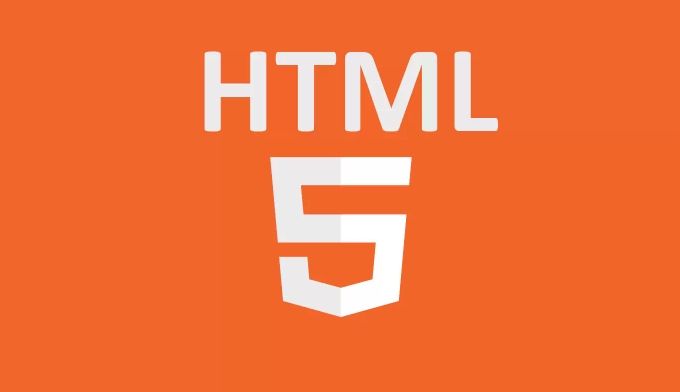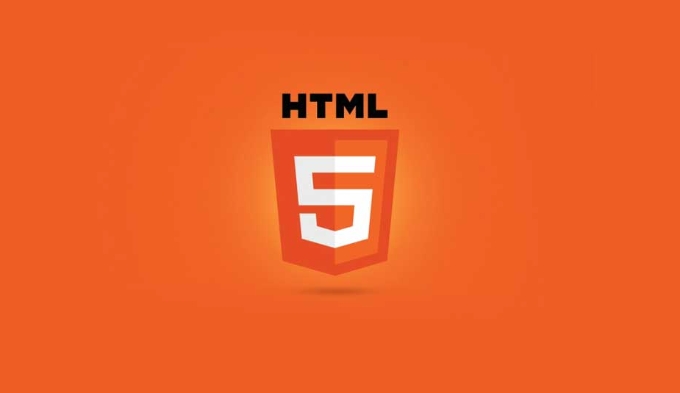The <details> and <summary> tags of HTML can be used to achieve accordion effect without JavaScript; 1. <details> is used to wrap expandable/hidden content, and is collapsed by default; 2. <summary> must be the first child element of <details> to define the click trigger part; 3. Multiple <details> can independently control the expansion status, suitable for FAQ display; 4. You can customize the style through CSS, but some browsers have limited support for <summary> layout; 5. The default icon can be replaced or hidden, and adding the open attribute can expand a certain panel by default; 6. Limitations include not supporting IE, not being able to fold multiple panels at the same time, and style compatibility needs to be paid attention to.

In web development, using HTML's <details></details> and <summary></summary> tags to create an accordion effect is a semantic and native support method. No additional JavaScript is required to implement the function of clicking to expand/collapse content.

What are <details></details> and <summary></summary> ?
<details></details> is an HTML5 tag used to wrap content that can be expanded and hidden, and is collapsed by default.
<summary></summary> must be the first child element of <details></details> to define the part that the user clicks, usually as a title or trigger button.
<details> <summary>Click to expand the content</summary> <p>This is the content hidden by default, and it will be displayed after clicking on the text above. </p> </details>
These two tags are naturally suitable for FAQ or information grouping display, which is often called "accordion" components.

How to use them as an accordion?
To achieve a simple accordion effect, only multiple <details> blocks are needed. Each block independently controls its expansion state:
<details> <summary>Problem 1</summary> <p>This is the answer to question one. </p> </details> <details> <summary>Problem 2</summary> <p>This is the answer to question two. </p> </details>
The default style of the browser may be relatively simple, and it can be beautified through CSS, such as adjusting arrow icons, font styles, etc.

Tips:
- The default triangle icon can be hidden or replaced with CSS.
- If you want a
<details>to expand by default, you can add theopenattribute:<details open> <summary>Problems with default expansion</summary> <p>This paragraph was visible from the beginning. </p> </details>
Can I customize the style?
Although browsers have their own default styles for <details> and <summary> , they also support CSS customization. You can set padding, margin, color, background and other properties like operating ordinary elements.
However, it is important to note:
- The
<summary>element cannot directly use some advanced features in the flex or grid layout. - Some browsers may have more restrictions on the style of
<summary>, so it is recommended to test the compatibility more.
Here is a simple style example:
summary {
cursor: pointer;
font-weight: bold;
list-style: none;
padding: 10px;
background-color: #f0f0f0;
border-radius: 4px;
}
details p {
padding: 10px;
margin: 0;
background-color: #fff;
}This will make the accordion look more beautiful while maintaining good accessibility.
What are the limitations?
Although <details></details> and <summary></summary> are easy to use, there are some limitations to understand:
- IE browser is not supported. If the project needs to be compatible with older browsers, it may need to be implemented in JavaScript.
- Multiple accordion panels cannot be closed at the same time unless JS control is added manually.
- Style customization is limited by the browser support level and sometimes requires additional compatibility issues.
If you don't pursue extreme style control and want to implement features quickly, this is a perfect choice for labels.
Basically that's it.
The above is the detailed content of Using the details and summary Tags in HTML for Accordions. For more information, please follow other related articles on the PHP Chinese website!

Hot AI Tools

Undress AI Tool
Undress images for free

Undresser.AI Undress
AI-powered app for creating realistic nude photos

AI Clothes Remover
Online AI tool for removing clothes from photos.

Clothoff.io
AI clothes remover

Video Face Swap
Swap faces in any video effortlessly with our completely free AI face swap tool!

Hot Article

Hot Tools

Notepad++7.3.1
Easy-to-use and free code editor

SublimeText3 Chinese version
Chinese version, very easy to use

Zend Studio 13.0.1
Powerful PHP integrated development environment

Dreamweaver CS6
Visual web development tools

SublimeText3 Mac version
God-level code editing software (SublimeText3)

Hot Topics
 Audio and Video: HTML5 VS Youtube Embedding
Jun 19, 2025 am 12:51 AM
Audio and Video: HTML5 VS Youtube Embedding
Jun 19, 2025 am 12:51 AM
HTML5isbetterforcontrolandcustomization,whileYouTubeisbetterforeaseandperformance.1)HTML5allowsfortailoreduserexperiencesbutrequiresmanagingcodecsandcompatibility.2)YouTubeofferssimpleembeddingwithoptimizedperformancebutlimitscontroloverappearanceand
 Adding drag and drop functionality using the HTML5 Drag and Drop API.
Jul 05, 2025 am 02:43 AM
Adding drag and drop functionality using the HTML5 Drag and Drop API.
Jul 05, 2025 am 02:43 AM
The way to add drag and drop functionality to a web page is to use HTML5's DragandDrop API, which is natively supported without additional libraries. The specific steps are as follows: 1. Set the element draggable="true" to enable drag; 2. Listen to dragstart, dragover, drop and dragend events; 3. Set data in dragstart, block default behavior in dragover, and handle logic in drop. In addition, element movement can be achieved through appendChild and file upload can be achieved through e.dataTransfer.files. Note: preventDefault must be called
 What is the purpose of the input type='range'?
Jun 23, 2025 am 12:17 AM
What is the purpose of the input type='range'?
Jun 23, 2025 am 12:17 AM
inputtype="range" is used to create a slider control, allowing the user to select a value from a predefined range. 1. It is mainly suitable for scenes where values ??need to be selected intuitively, such as adjusting volume, brightness or scoring systems; 2. The basic structure includes min, max and step attributes, which set the minimum value, maximum value and step size respectively; 3. This value can be obtained and used in real time through JavaScript to improve the interactive experience; 4. It is recommended to display the current value and pay attention to accessibility and browser compatibility issues when using it.
 How can you animate an SVG with CSS?
Jun 30, 2025 am 02:06 AM
How can you animate an SVG with CSS?
Jun 30, 2025 am 02:06 AM
AnimatingSVGwithCSSispossibleusingkeyframesforbasicanimationsandtransitionsforinteractiveeffects.1.Use@keyframestodefineanimationstagesforpropertieslikescale,opacity,andcolor.2.ApplytheanimationtoSVGelementssuchas,,orviaCSSclasses.3.Forhoverorstate-b
 HTML audio and video: Examples
Jun 19, 2025 am 12:54 AM
HTML audio and video: Examples
Jun 19, 2025 am 12:54 AM
Audio and video elements in HTML can improve the dynamics and user experience of web pages. 1. Embed audio files using elements and realize automatic and loop playback of background music through autoplay and loop properties. 2. Use elements to embed video files, set width and height and controls properties, and provide multiple formats to ensure browser compatibility.
 What is WebRTC and what are its main use cases?
Jun 24, 2025 am 12:47 AM
What is WebRTC and what are its main use cases?
Jun 24, 2025 am 12:47 AM
WebRTC is a free, open source technology that supports real-time communication between browsers and devices. It realizes audio and video capture, encoding and point-to-point transmission through built-in API, without plug-ins. Its working principle includes: 1. The browser captures audio and video input; 2. The data is encoded and transmitted directly to another browser through a security protocol; 3. The signaling server assists in the initial connection but does not participate in media transmission; 4. The connection is established to achieve low-latency direct communication. The main application scenarios are: 1. Video conferencing (such as GoogleMeet, Jitsi); 2. Customer service voice/video chat; 3. Online games and collaborative applications; 4. IoT and real-time monitoring. Its advantages are cross-platform compatibility, no download required, default encryption and low latency, suitable for point-to-point communication
 How to check if a browser can play a specific video format?
Jun 28, 2025 am 02:06 AM
How to check if a browser can play a specific video format?
Jun 28, 2025 am 02:06 AM
To confirm whether the browser can play a specific video format, you can follow the following steps: 1. Check the browser's official documents or CanIuse website to understand the supported formats, such as Chrome supports MP4, WebM, etc., Safari mainly supports MP4; 2. Use HTML5 tag local test to load the video file to see if it can play normally; 3. Upload files with online tools such as VideoJSTechInsights or BrowserStackLive for cross-platform detection. When testing, you need to pay attention to the impact of the encoded version, and you cannot rely solely on the file suffix name to judge compatibility.
 How to create animations on a canvas using requestAnimationFrame()?
Jun 22, 2025 am 12:52 AM
How to create animations on a canvas using requestAnimationFrame()?
Jun 22, 2025 am 12:52 AM
The key to using requestAnimationFrame() to achieve smooth animation on HTMLCanvas is to understand its operating mechanism and cooperate with Canvas' drawing process. 1. requestAnimationFrame() is an API designed for animation by the browser. It can be synchronized with the screen refresh rate, avoid lag or tear, and is more efficient than setTimeout or setInterval; 2. The animation infrastructure includes preparing canvas elements, obtaining context, and defining the main loop function animate(), where the canvas is cleared and the next frame is requested for continuous redrawing; 3. To achieve dynamic effects, state variables, such as the coordinates of small balls, are updated in each frame, thereby forming






